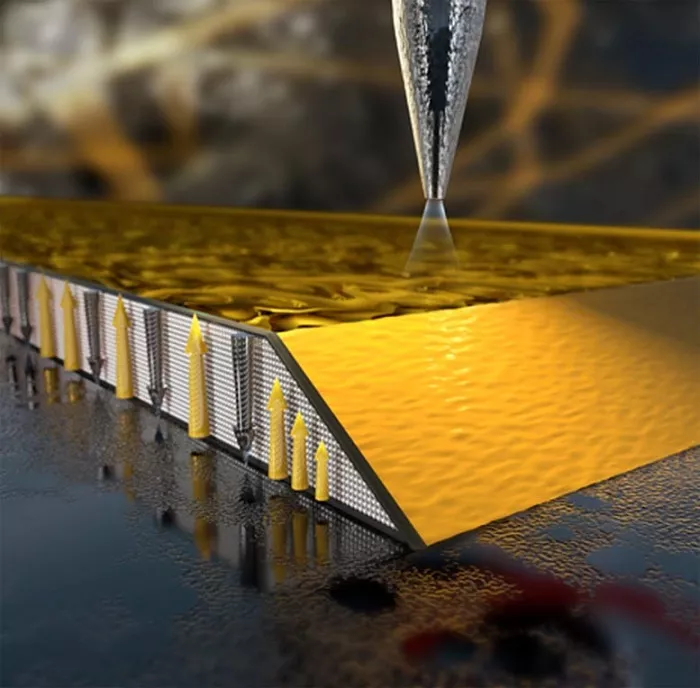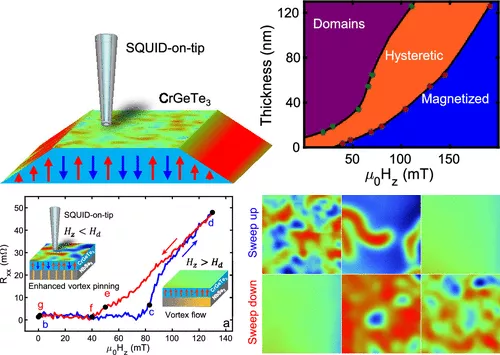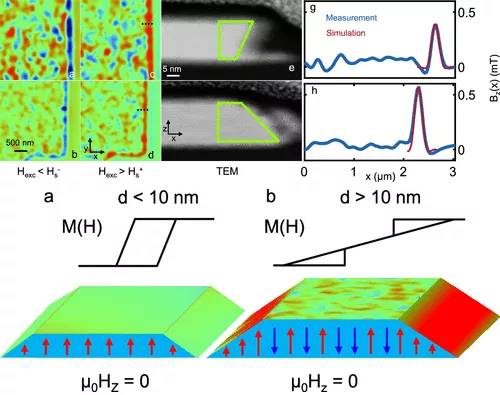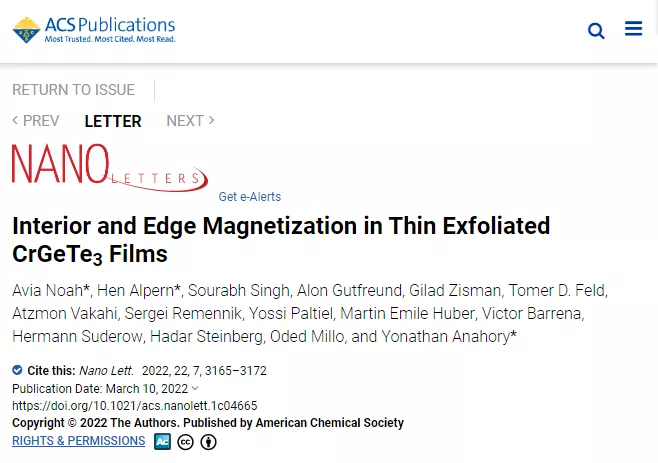Despite all kinds of difficult obstacles along the way, physicists are still interested in exploring the wonderful properties of special materials at the micro scale. For example, at the nanometer level with a thickness of less than 100 atoms, many phenomena can no longer operate in a predictable way by the laws of macro physics In a paper published in the journal nano express on March 10, 2022, a research team from Hebrew University introduced in detail how they can make use of the newly discovered micro magnetic phenomena in potential industrial fields

Example of nanoscale magnetic micrograph at the edge of crgete ₃ material (from ori Lerman)
The research team (including Hu doctoral student Avia Noah), led by Dr. YONATHAN anahory of the Laka Institute of physics at the Hebrew University (HU) in Jerusalem, was earlier published in nano letters 》The internal and edge magnetization of stripped crgete ₃ film is introduced in the journal.

Avia Noah on the left and YONATHAN anahory on the right (from Hebrew University)
The researchers were surprised to say that this is the first time they have seen an image of a nano magnet with "edge magnetism". More specifically, this chromium (CR) germanium (GE) tellurium (TE) material retains a magnetic range of 10 nm only at the edge (about one tenth of the diameter of human hair).

Study matching figure - 1: crgete ₃ / NbSe þ magnetoresistance and corresponding sot image at 4.2K
Anahory pointed out that although the nano magnetic effect is very small, it is expected to be widely used in daily life - "in the technology competition to make components smaller and more energy-saving, many studies have focused on small magnets with different shapes".

Figure 2-3: double layer / sot scanning images with different thickness
This newly discovered edge magnetism indicates the possibility of a long wire magnet with a thickness of only 10 nm and can be bent into any shape, and even completely changes the way we manufacture spin electronic devices - such as the next generation of nano electronic devices with lower power consumption, higher memory and processing power.

Figure 4-5: schematic diagram of SOT microstructure inside / at the zero field edge of the sheet and local magnetic structure with different thickness
SCI Tech Daily At first, anahory just wanted to understand the CGT nano magnetic material made by his colleagues at the Autonomous University of Madrid in Spain. As a result, with the help of a new magnetic microscope developed by Israel, a special edge magnetic phenomenon was accidentally observed.

Finally, new discoveries rely on highly complex new technologies, and nanoscale microscopic phenomena themselves have become the core to prove other more advanced technologies.